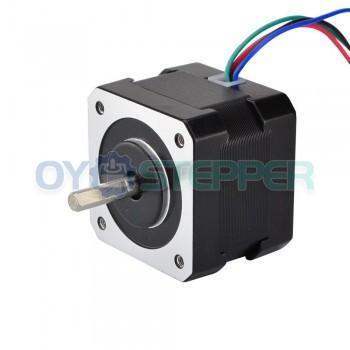Advantages & Limitations of steper motor

Advantages
Precise positioning
Stepper motors have a high pole count, usually from 50 to 100, and can accurately move between their many poles without the aid of a position encoder. As they move in precise steps, they excel in applications requiring precise positioning such as 3D printers, CNC, camera platforms and X, Y plotters.
Precise speed control
Precise increments in movement enables excellent speed control, making them a good choice in process automation and robotics.
Excellent torque characteristics at low speeds
Stepper motors (pancake stepper motor, or nema 6 stepper motor ) have maximum torque at low speeds (less than 2000 rpm), making them suitable for applications that need low speed with high precision. Normal DC motors and servo motors do not have much torque at low speeds.
Excellent torque to maintain position
Suitable for applications with high holding torque.
Easy to control
Stepper motors can be easily controlled with microcontrollers such as the ATmega chips that are readily available on Arduino development boards.
Limitations
Noise
Stepper motors are known to generate some noise during operation. Thus, if your device needs to be quiet, accommodate a high range of speeds and torques and maintain a reasonable efficiency, then consider using a DC motor. But if your motion control application needs to be built quickly, does not need to be efficient, and a little noise is acceptable, then a stepper motor might be more suitable.
Limited high-speed torque
Generally, stepper motors have less torque at high speeds than at low speeds. Some steppers can be optimized for better torque at high speeds, but a driver would have to be paired with it to achieve that performance.
Low Efficiency
Unlike DC motors, the current consumption of stepper motors is independent of load and they constantly draw maximum current. As such, they tend to become hot.
Might skip steps
As stepper motors have a low top-speeds, they might skip steps at high loads.
Advertise on APSense
This advertising space is available.
Post Your Ad Here
Post Your Ad Here
Comments